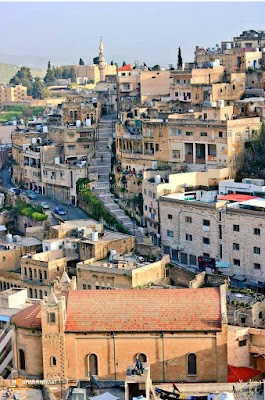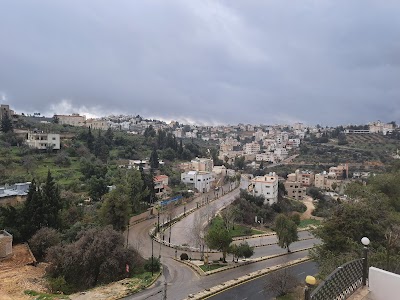Qasr Al-Muwaqqar (قصر الموقر)
Overview
Qasr Al-Muwaqqar, nestled in the heart of Mafraq, Jordan, is a remarkable relic from the Umayyad period, constructed during the 8th century under the reign of the renowned Caliph Al-Walid II. This stunning desert castle stands as a testament to the architectural brilliance and luxurious lifestyle of the Umayyad dynasty, captivating visitors with its historical significance and intricate design.
Strategic Location and Dual Purpose
Positioned strategically on a vast plain, Qasr Al-Muwaqqar served a dual purpose: it acted as both a defensive stronghold and an opulent residence for the elite. The site was carefully chosen for its advantageous vantage point and proximity to essential water resources. In fact, the name "Muwaqqar" translates to "station" or "fort," aptly reflecting its multifaceted role. The architecture of the castle harmoniously blends features of both a palace and a fort, embodying a characteristic style of many Umayyad desert castles.
Architectural Marvel
The construction of Qasr Al-Muwaqqar utilized local limestone and basalt, materials readily available in the region, showcasing the ingenuity of the builders in harmonizing with their environment. The layout features a central courtyard surrounded by an array of rooms and halls, a hallmark of Umayyad architecture designed for privacy and social gatherings. Visitors can appreciate how this courtyard served as a tranquil oasis amidst the desert, inviting relaxation and community.
Artistic Heritage
One of the most striking aspects of Qasr Al-Muwaqqar is its exquisite mosaics. Though much of the original flooring has deteriorated or been removed over time, remnants of intricate designs featuring geometric patterns and floral motifs can still be admired. These mosaics once adorned the floors of the main halls and reception areas, reflecting the wealth and artistic sensibilities of the Umayyad era.
Ingenious Water Management
The water management system at Qasr Al-Muwaqqar was exceptionally advanced for its time. The castle boasted a large cistern and a sophisticated network of channels designed to collect and store rainwater, a crucial resource for survival in the arid desert landscape. This ingenious system ensured that the inhabitants had access to a reliable water supply throughout the year, highlighting the castle's self-sufficiency.
Religious and Domestic Spaces
Within the castle, a small mosque served as a central space for daily prayers, essential in any Islamic establishment. The various rooms throughout the fortress catered to different needs, including sleeping quarters, kitchens, and storerooms, providing a glimpse into the daily lives of its occupants.
Legacy and Decline
While the exact reasons for the decline and eventual abandonment of Qasr Al-Muwaqqar remain shrouded in mystery, it is believed that shifts in political power, changing trade routes, and the harsh desert climate played significant roles. Over the centuries, this once-grand castle succumbed to the ravages of time, leaving only remnants of its former glory.
Today, Qasr Al-Muwaqqar stands as a valuable archaeological site, offering profound insights into the architectural and cultural achievements of the Umayyad period. It symbolizes the historical opulence and strategic importance of the region during the early Islamic era. Although much of the original structure has been lost, ongoing archaeological efforts continue to unveil new details about its construction and usage, allowing historians to piece together the rich tapestry of life in this fascinating desert castle.








